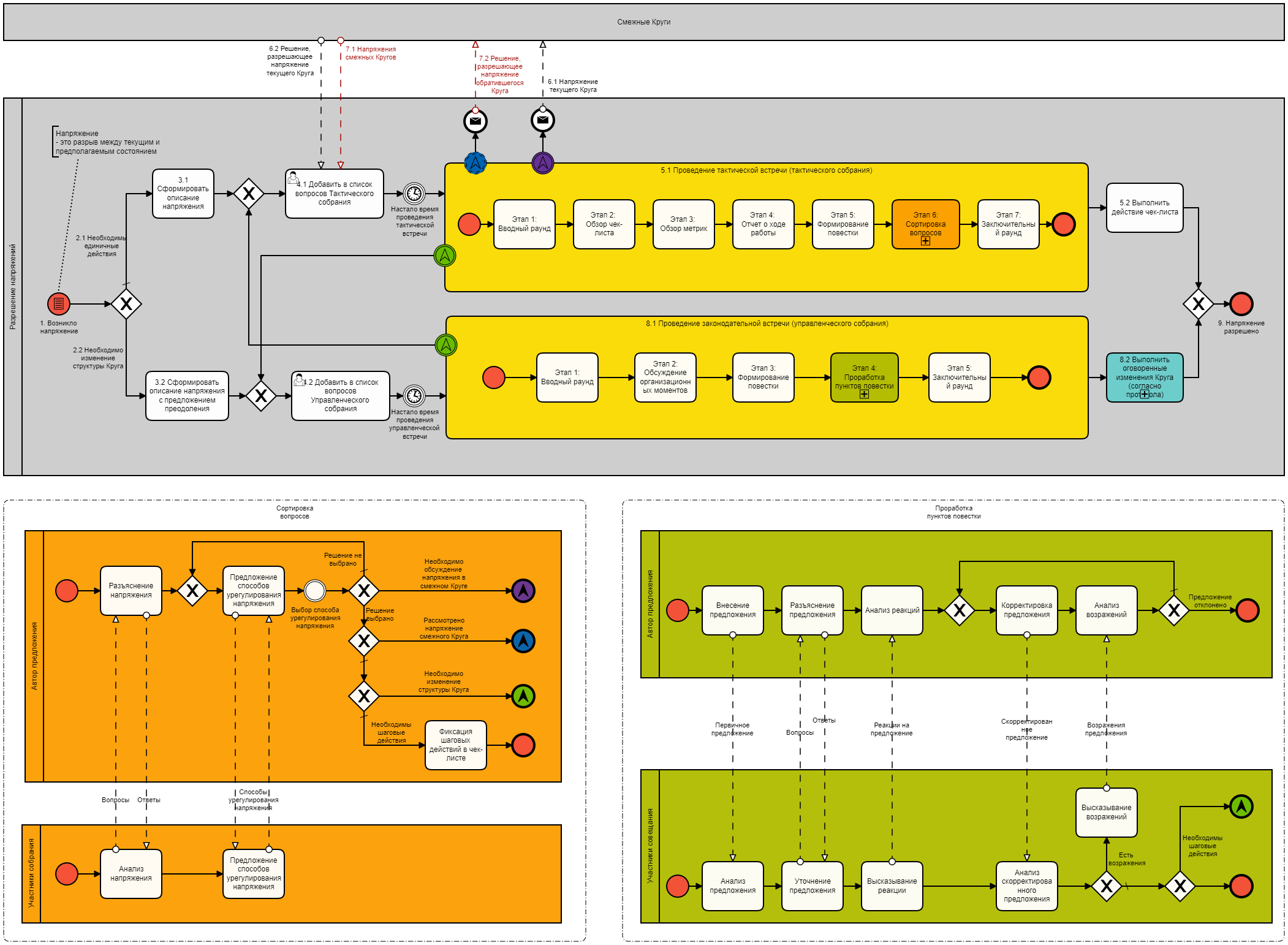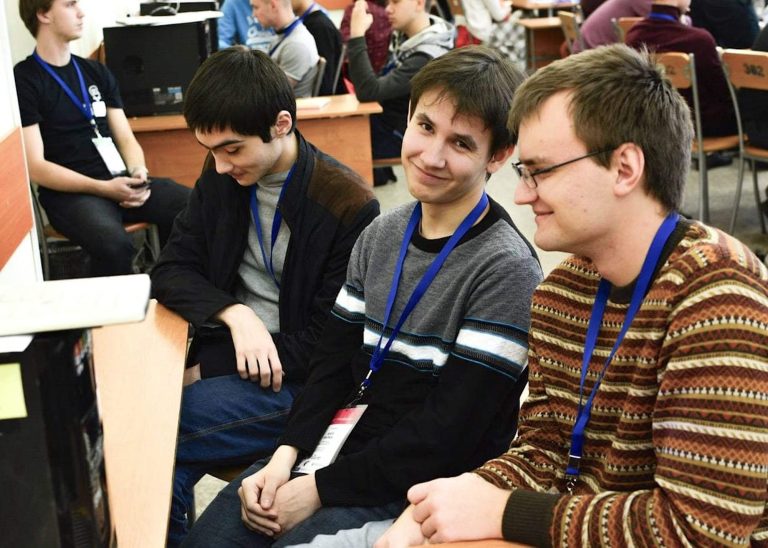The ideal organization model in a market economy or the story of the lost fractal…
Introduction
Modern natural science comes to the conclusion that all systems that exist in the nature around us – from the microcosm to the Metagalaxy – have a fractal structure.
A fractal is a set that has the property of self-similarity (an object that exactly or approximately matches a part of itself, that is, the whole has the same shape as one or more parts) (Wikipedia)
If you look closely, fractals are everywhere – twigs look like trees; coasts, rocks, clouds have self-similar outlines when scale is approached, rivers and human arteries are self-similar regardless of size, stock charts of different timeframes are similar to each other and obey the same laws, microeconomic demand and supply curves are similar to macroeconomic aggregate demand and supply curves … list endless.
Even the “Fractal of Humanity” was discovered: atom – (set of atoms) cell – (set of cells) person – (set of people) { department – (set of departments) organization – (set of organizations)} country – (set of countries) planet – (set of planets ) The Universe – (the totality of the Universes) mmm … such a word has not yet been invented. This fractal was discovered by me and I want to note that all the listed objects obey the same laws… interesting? This observation will be discussed in the next article. Consider making an announcement.
The observation that I want to share is also based on a fractal, although the object of study has not yet been considered in this perspective (or I don’t know about it) – the organizational structure of an organization in a market economy will be investigated.
A revolution is coming in management (below I give logical arguments for this loud statement) and as an ardent supporter of “living” organizations, agile methodology, holacracy, etc. With this article I want to accelerate its onset. To popularize modern management methodologies, in the article I will try to create in your imagination a picture of a working “live” enterprise, which is based on a “self-organizing” system (therefore, think before reading, because you will live with it later, it’s a joke), and I will also answer frequently asked questions to which I answer when I share this methodology with someone. So let’s go…
An economic view of an organization built on a traditional hierarchy
According to economic theory, the organizational structure of an enterprise (built on a traditional hierarchy) has a number of costs:
a significant part of the explicit costs, in the form of: salaries for managers (since it is necessary to maintain the entire hierarchy of managers, which reaches a significant scale with the growth of the organization; at the same time, they have higher salaries compared to employees) and employees (whose workload often occurs unevenly according to the staffing table, taking into account the approximate workload; who may be undermotivated, therefore, working only “for a salary” and not in full return);
as well as implicit transaction costs – in the form of a lack of flexibility in restructuring the structure of the organization and its business processes under rapidly changing market conditions (and the larger the organization, the more the flexibility factor aggravates the situation).
These costs are like an “elephant in a china shop” (it is big, a lot of resources are spent on it, but it is still clumsy) with which they put up and even try to stir it up through various tricks, having come up with various options – functional management, process management, matrix management, which add functionality (in fact, they add additional work to employees who are already overloaded) and at the same time add costs for managing these processes and complicating the organizational structure.
At the same time, the “market” requires quick decisions and reactions that the traditional hierarchical organization provides with difficulty (or does not provide at all) – with the next change in the market situation, in order to react to it on the part of the organization, overcontrol forces the organization to go through the procedure of coordinating decisions on a number of levels of the hierarchy, which gives rise to additional discussions, decision-making (or lack of decision-making, since all managers are afraid and delay the process), writing orders, their execution, etc., that is, it has a lot of transaction costs associated with the adoption and execution of orders. And the market does not wait … as a result – a delay in the reaction to the next shock or recession, loss of profits, losses where they could have been avoided.
There is a feeling that the “grandfather” wants to keep up with the “youth”, but no matter how hard he tries, he does not have time.
From this I want to make the first “revolutionary” conclusion:
Slow traditional hierarchical systems do not keep pace with the rhythm of a fast market economic system.
What is the ideal organization model in a market economy?
The answer to this question will be given by the course of development of all enterprises in the world, i.e. the very scientific and technological progress that shifts the LRAS aggregate supply curve, and therefore increases the country’s GDP (hello to experts in macroeconomics!). I wonder if anyone has asked this question? I want to share my observations.
In economic theory, there are several types of economic systems:
traditional (which are based on traditions, not laws; for example, the organization of life in tribes or underdeveloped countries);
planned (many people know about the planned economy of the USSR, the idea is simple – to provide everyone with equal benefits under the strict control of the state); in the modern world, this economic system has not proven itself, I know that it currently exists in North Korea and Cuba;
market (we live in it, the idea is the same – to provide everyone with benefits, but through the motivation “earn and buy”, which means – develop, manifest, compete, etc.).
Considering that complex systems (which are also economic systems) almost always have a fractal structure, we will find the fractals of the lower level of each of the listed systems. Then:
the traditional economic system in macroeconomics will correspond to a family business in microeconomics (they are united by the absence of orders and rigid hierarchies – only traditions and unspoken rules);
the planned economic system in macroeconomics will correspond to a hierarchical enterprise in microeconomics (both systems are based on the Plan: “Gosplan” and “Plan for the release of the enterprise”; in both systems there is a strict control of results at all levels of the hierarchy with a procedure for coordinating actions with higher managers / departments) ;
The market system of the economy should correspond to an organization that would have time to adjust to the fast market rhythm, i.e. had the ability to quickly adapt to economic cycles and shocks, having in its structure mechanisms similar to market regulation, i.e. inside the organization, a system with a certain prototype of management, similar to the market one, is needed … the traditional hierarchical organization does not fit this description. These systems are absolutely different – they have a different nature and principles of operation (as described above: the traditional hierarchical system is a fractal planned economy), it turns out that the fractal of the lower level of the market economy is lost…
Let me write down my conclusion:
The traditional hierarchical system of organization has nothing to do with the market economic system, and therefore is not its fractal. It turns out that the fractal of the lower level of the market system is lost…
This explains why organizations built on traditional hierarchical systems do not keep up with the market – they are simply not an extension of them. And this happens everywhere, almost all over the world (only Japanese management methodologies based on Deming principles differ, but even there improvements are aimed at increasing efficiency by improving the comfort of workers, and not at matching the market). Imagine the scale… PRACTICALLY THE WHOLE WORLD WORKS INEFFICIENTLY!
From what I have written, I draw another conclusion:
In order to keep up with the market, an organization needs a system within the organization that has mechanisms similar to market ones.
The structure of the enterprise fractal market economy, myth or reality?
In order to keep pace with rapidly changing market conditions, the methodologies of “self-organizing” organizations are now gaining popularity, the business processes of which are arranged in such a way that the structure of the organization independently adjusts to new conditions (like a “living” organism).
The idea is utopian, so many do not believe in such systems and do not even immerse themselves in the principles of its operation. At one time, I studied this process in great detail (I even drew a BPMN diagram, which is a kind of exclusive, which I will share below) and I will try to explain it as simply as possible, giving an economic justification, creating a picture of the work of such an enterprise in my imagination (to better imprint and dream later in a dream, joke). Let’s start…
The structure of a “living” organization
Imagine a hierarchical organization with three levels of management: top manager – heads of departments – employees. We add the Mission to the company, according to the Mission we form the Vision and, in order to achieve the Vision, we set the Goals and their digital counterpart – the Plan / KPI (thus we determined the direction of the organization’s development and outlined the goals in digital form – all according to strategic management).
Considering that in the given Plan / KPI of the organization each department performs a certain function, for each of the departments, the heads of departments (employees who are initiated into the top-level processes of the organization) set:
1) Vision department (i.e. the organization voices its role in the market, the department voices its role in the organization, repeats the fractal), its Goals And Plans/KPIs, showing the direction of development of the department and the required indicators that do not contradict the Plan / KPI of the organization (conditionally – the organization’s plan to produce and sell at least 100 stools, then the plan of the supply department – to order at least 400 legs and 100 seats; for production – to produce at least 100 stools; for the sales department – to implement at least 100 stools with their KPI departments for self-assessment of work). Thus, the organization becomes transparent, each employee understands both the direction of the company’s development and the direction of development of each department with the goals and plans assigned to the department and the organization, expressed in quantitative indicators.
2) Roles employees their areas of responsibility And responsibilities – a kind of staffing of the department (not the whole company!), which indicates not only the number of employees, but also their areas of responsibility (for the administrator – hardware infrastructure, for the programmer – 1C configuration or HTML code, for the accountant – primary documents, 1C postings) and responsibilities (a clear version of the job description, where the functions performed by the Role are concisely recorded).
There are predefined roles for employees of each department:
department representative, o who will represent the interests of the department in the parent department. This role – collects problems, suggestions, comments that cannot be resolved within the department and must be discussed in a higher department (yes, two representatives will be present at meetings / meetings in a higher department: from management – the head of the department, from the department – a representative of the department);
facilitator (the procedure for holding meetings / meetings is carried out according to a strict algorithm under the control of facilitators who control the course of the meetings, give all department employees a chance to speak, cut off unconstructive discussions and emotional statements, more on this below);
secretary – records the results of discussions, organizes meetings.
Thus, a prototype or skeleton of the department is being developed, but so far without employees.
It’s time to hire employees … for hiring, an internal labor exchange is used (yes, employees are searched from among those working in the organization!), where “applicants” apply – i.e. employees who have free time to perform additional functions; as well as “employers” – departments in which there are free Roles. And then, as in the labor market, a cost is assigned for the fulfillment of the Role and the law of supply and demand from microeconomics begins to work: the higher the cost of fulfilling the Role (supply) is assigned, the more willing to fulfill its duties (demand); the opposite is also true – the more people who want to get an additional role (demand), the cheaper the cost of roles (supply) will be.
Until the employee is found, the head of the department himself performs all the unclosed roles, therefore he is interested in the rapid recruitment of employees, which means that PR and positive feedback from those who worked in the department earlier are needed … everything is like in the labor market.
So, the employees are recruited.
The main task of the department is to fulfill the assigned plan / KPI (by all means!). If any of the Roles does not cope with its task (there is a “tension”), then a proposal is made to speed up its work (a decision to solve the “stress”). Thus, proposals for solving “stresses” are collected from all employees of the department in the course of performing work duties. After a list of issues for discussion is set (or within a set period of time), meetings (meetings) are held where the collected “tensions” are discussed and decisions are made. Meetings are organized by secretaries (see predefined department roles above).
There are two types of meetings:
managerial, to address issues of department reorganization, changing or reassigning role functions, making decisions about additional resources (yes, these issues are discussed by all department employees, and not by the head of the department alone, as in traditional hierarchical systems);
technical, for solving current operational issues (the same “fly-ups”, but passing according to a strict algorithm).
The format for discussing issues at meetings is strictly regulated (the scheme of discussions will be given below). The discussions are accompanied by facilitators who supervise the discussion processes. Decisions made as a result of the discussion, assigned to perform the work by the Roles, as well as the facts of the execution of the work assigned at previous meetings, are recorded by the Secretaries (see predefined roles above) in the minutes.
The concept of discussion is as follows – if the decision improves the efficiency of the department (that is, none of the participants in the meeting finds an argument that would indicate that making a positive decision worsens the work of the department), then a positive decision is made, even to the detriment of other employees (no alternative decisions !). Employees who have received “damage” as a result of making a decision can make another proposal for discussion on how to get rid of the “damage” (“stress”) that suddenly came to them … Thus, all stresses are worked out and in the process of working out stresses, the department “develops” (similar to how the “bottleneck” place of production is found and worked out in the “Theory of Constraints of Systems”, which leads to the overall productivity of the enterprise, only in this case the “stress” is worked out).
If the issue cannot be resolved in the current department, then it is submitted for discussion and decision to a higher department.
How does everything work and why does an organization acquire the status of “live” and self-organizing?
The top manager, having studied the market situation, sets the organization’s Plan/KPI for the next trading period. According to the Plan / KPI of the organization, the heads of departments calculate and set their own Plan / KPI for the department. Further, work begins and all employees work to fulfill the specified indicators of the Plan / KPI.
If the workload of an employee at the time of performing his part of the work has become very high, or just an idea has arisen to increase his productivity or the quality of the work of the department (there is “Tension”), then the employee submits a proposal to optimize the work area (see Fig. “Stress resolution process”, item 1):

If a single action is required to resolve the voltage (see clause 2.1), then a description of the voltage is generated (see clause 3.1) to be added to the list of questions of the Tactical Meeting (see clause 4.1). As a result of considering the tension at the Tactical Meeting (see paragraph 5.1), one of the decisions is made:
voltage consideration is transferred for consideration to the Management meeting (purple output) – in case, during the consideration, it is determined that a managerial, rather than a tactical decision is needed;
consideration of the voltage is transferred for consideration to the Tactical meeting of the upper or adjacent Division / Circle (see clause 6.1) – if during the consideration it is determined that it is impossible to make a decision on this voltage in the current Division / Circle. The decision on voltage from a higher or adjacent Division / Circle will be added to the discussions at the next Tactical meeting (see clause 6.2);
decisions on voltages of other Sections/Circles (see clause 7.1) are transferred to the applied Division/Circle (see clause 7.2);
a positive decision is made to resolve the voltage and the assigned action is added to the checklist for verification of its implementation at the next meeting;
a negative decision is made on the voltage resolution proposal.
If a change in the structure of the Department (Circle) is necessary to resolve the tension, i.e. it is necessary to revise the powers of participants and expectations (see clause 2.2), then a description of the tension is formed with a proposal for its resolution (see clause 3.1) to be added to the list of issues of the Management Meeting (see clause 4.1). Less decisions can be made in this case:
voltage consideration is transferred for consideration to the Tactical meeting (blue output) – in the event that during the consideration it is determined that a tactical rather than a managerial decision is needed;
a positive decision is made to resolve the tension, which is subsequently carried out (i.e. the Department / Circle is reorganized, functions are added or removed to the Roles, etc.);
a negative decision is made, which does not have any additional continuation.
According to the described algorithm, all arising stresses are resolved (see item 9).
Here’s the complete diagram (an expanded short diagram discussed above), which also shows the steps for considering stresses:

The scheme is based on books:


Accordingly, you will find a detailed description of each of the stages in these books, I see no reason to quote them in this article.
A simple picture showing the meaning behind resolving tensions in meetings:

I’ll add a few words about the load …
If the load on the department grows and as a result of a management meeting a decision is made to create a new Role, then a prototype is created with a description of the functions performed, and if there are no people who want to perform this Role in the Department / Circle, then an application is submitted to the internal labor exchange, where they are searched for Functions Role applicants from other Divisions/Circles. Until the applicant finds the function of the role, the Head of the Department performs.
If the load on the department is reduced, that is, the load on the Roles has decreased (or as a result of a management meeting a decision will be made to eliminate the Role), then employees who have freed up time apply for an internal labor exchange or offer themselves as executors of the Roles available on the exchange .
When the labor exchange has only job applications, no offers from employees, then new employees are hired, who subsequently fill the Roles of Departments / Circles and the organization grows.
As a result, the organization:
works from the Mission, strives to achieve the Vision by fulfilling the Goals set by the Plan / KPI, i.e. has a direction of movement.
acquires a clear transparent structure, with clear work functions performed within the Department / Circle;
easily controlled by Plan/KPI figures (similar to managing the economy through the refinancing rate and regulating bank limits in macroeconomics) without immersing yourself in the organizational structure (the task of the brain is to guide a person in a given direction, and not to think for the heart – how to beat correctly or for the stomach – how to digest food … I think the analogy is clear);
optimized as much as possible, since there are no “downtimes” of employees – everyone earns money by performing the maximum number of possible Roles to receive maximum earnings, while they are motivated to develop – in order to subsequently fill more expensive Roles;
having a synergistic environment, since it is aimed at Union employees to achieve their goals (traditional organizations are aimed at separation employees in order to control their activities, so there is no synergy in such organizations), which means that again we can talk about reducing costs due to an increase in the efficiency of employees;
easily scalable – roles are created for any new project, for which employees are sought (if the employee is not available, then the cost of performing the duties of the Roles increases until those who wish are found), respectively, there will be no need to force employees to take on additional responsibilities;
easily reduced during recessions – the Plan / KPI of the organization decreases, after which the Plan / KPI of the departments decreases, the load on the Roles is reduced and employees begin to look for work on the internal labor exchange, where all the Roles are “sorted out”. Seeing that there are no free Roles, employees make an independent decision (and not enterprise management for employees, as in traditional hierarchical organizations!) – to work with a reduced load on existing Roles and earn less or try to look for work elsewhere. In this scheme, with mass layoffs, there is a minimum of transaction costs, in comparison with mass layoffs in a traditional hierarchical organization;
has the maximum accumulated intellectual capital, created by the mind of all employees of the organization (and not by several managers, as in the traditional hierarchical system);
has free channels of information transmission without filtering and distortion by management;
complies with the 14 Deming principles;
becomes turquoise.
As a conclusion
The described management system is similar to a market economy for a number of reasons – market laws work in this system: when managing through planned indicators; when looking for a job in the labor market; when assigning the cost of performing role functions. Therefore, I can say with confidence that the described management methodology is a “lost” fractal of the economic system.
The transition to “self-organizing” management methodologies will be a “management revolution”, which means that the faster the transition takes place, the faster the scientific and technical process will take place and organizations will start to work more efficiently, which means they will produce more products with lower costs (due to cost savings). and putting the money saved in this way into circulation), which means increasing GDP and the amount of taxes to the budget of the Russian Federation, which means increasing federal and regional budget spending, which means improving the quality of life of citizens … which means increasing, gaining popularity, “International Happiness Index”.
Therefore, I want to draw attention to this management methodology:
directors of enterprises, since this is a real opportunity to save on costs, both material and time…
top managers who are not entirely satisfied with the organization of processes in the process, functional and matrix org. structure – in the proposed version, the structure is transparent, scalable, manageable…
investors who have a block of non-preferred shares (and therefore have the floor at general meetings of shareholders) – it’s not for me to say how the optimization of the company’s internal processes affects the value of shares …
ministries and departments directly or indirectly related to GDP growth – the proposed methodology for managing organizations can be attributed to scientific and technological progress, which, according to classical economic theory, leads to GDP growth (since it shifts the LRAS aggregate supply curve).
to all those interested, since the introduction of the proposed methodology will change the idea of work, change the foundation.
I also want to say that I do not offer implementations, paid consultations or any other ways to monetize this concept, I was just interested in understanding management … if the proposed concept is of interest, then I have some experience in creating an automated system on 1C, algorithms for the transition from the classical model, who are interested – write, I will share … just like any of my opinions on this management methodology – the way I see and understand it …
Everything that is written here is a theory, I can’t share my practice, because I haven’t met the owner of the enterprise yet, who agrees to experiment on the transition to “turquoise” management (there was only a little experience in the transition to modern management methodologies in the development team, which I described in the article From “machines” to “plants” or my experience of moving to agile) … maybe someday I will organize my own “turquoise” organization.
P / S: I would like to finish beautifully, but I promised to write answers to frequently asked questions.
————————————————– —–
– If employees manage a department without a leader, then it turns out that the system is anarchic, uncontrolled, and therefore unmanageable?
– No, it turns out that the system is partly “anarchic” (the word has a negative connotation, which is confusing, but in fact it has a positive effect: the group makes a collective, and therefore more effective decision, while each decision is a kind of brainstorming; the opportunity to change something in the work of the department adds responsibility to the employee; teamwork appears, a synergistic effect …), but at the same time manageable (the goal is to achieve the goal in the form of indicators, taking into account the restrictions set by the organization). Families, in a market economy, are the same anarchic uncontrolled system, it is not clear who is in charge and who is responsible for what …
————————————————– —–
– It turns out that a programmer will be able to work as an accountant, driving in a primary account, and in the personnel department and at the machine tool in production? Somehow unusual…
– And why not, if there are competencies and energy and time allow?
————————————————– —–
– What are the main problems that may arise in the transition from a traditional hierarchical system to a “self-organizing” one?
– Hard salaries; authoritarian leaders and non-initiative employees; lack of facilitators; lack of automation … in the long term, all these problems are solvable, but in the short term you will have to “fight” with this.
————————————————– ——
– Is it possible to make one of the departments according to the proposed methodology in the traditional hierarchical system?
– It is possible (it is written in the books that it is impossible!), provided that the directiveness of traditional management will not concern this department (this department will be like Lesotho in South Africa), which may not suit traditional managers.





